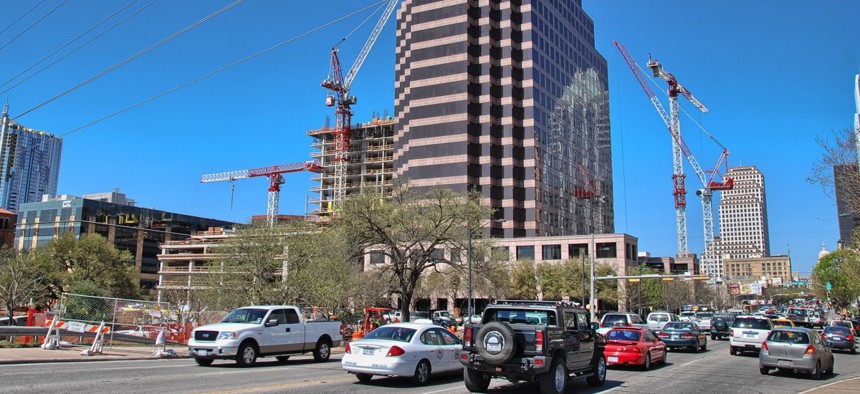Demystifying Austin’s Mobility Bond

Austin, Texas
With 68 capital improvement projects in the works and more forthcoming, the city needed a way to keep residents aware of how their tax dollars are being spent and to what effect.
The city of Austin’s new Capital Projects Explorer officially launched on Wednesday and allows users to better understand the city’s progress on 2016 Mobility Bond improvements, which are being delivered over an eight-year lifespan.
Approved by voters in November, the $720 million bond is shared between Austin’s Corridor Program Office, Public Works Department and Transportation Department—the first receiving the lion’s share $482 million.
All three offices coordinate when it comes to planning, implementing and managing infrastructure projects designated under the ordinance, but improvements vary from regional to local to corridor like new sidewalks, bikeways and urban trails.
“We’re allowing people to see exactly what we’re building and how much we’re spending and see, not literally what’s in their backyards, but maybe what’s near their home,” said Sara Behunek, a communications manager with the Corridor Program. “Really, it’s a new level of transparency.”

Currently, 68 projects are displayed on the Explorer and can be selected for description, budget, funding, phase, and contact information updated monthly. Projects can be filtered by pre- or post-construction or city council district among other searches, and more will be added as all $720 million are allocated.
Seattle-based software company Socrata helped develop the Explorer, which connects to internal project management and financial databases. As project managers enter new data internally, the Explorer updates.
“Any tool is only as good as the data that you have, and this is the best data that we have,” Behunek said. “Data is not being stored in two places; we’re really putting the information that we have out there.“
The ordinance calls for specific types of infrastructure, like $37.5 million for sidewalks, but master plans are being created for select projects out of $1.5 billion’s worth of ideas for reducing congestion; boosting transit services; shortening intersection delays; preserving existing businesses; adding affordable housing; and just generally producing more liveable, walkable, safe, transit-supported corridors.
Another reason for the Explorer is that the process is moving quickly with a proposal to free up money for construction due next month, and residents need to be kept up to speed.
The website’s footer includes an FAQ clarifying potentially confusing municipal jargon and a link to Austin’s connected open data portal—also powered by Socrata.
Capital improvement projects outside those covered by the bond could eventually be folded into the Explorer.
"From our performance dashboard, the recently released Open Budget and now this interactive 2016 Mobility Bond portal, city staff continue to deliver on our promise of making Austin an open, transparent and accessible government,” Austin’s interim city manager, Elaine Hart, said in a statement.
Dave Nyczepir is a News Editor at Government Executive’s Route Fifty and is based in Washington, D.C.
NEXT STORY: Can government keep up with automated vehicles?






